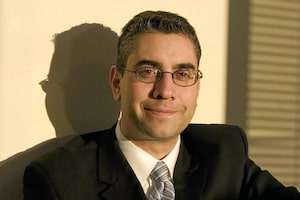Everyone knows that a book should not be judged by its cover. The same can be said for the unique segregated fund, an investment product that at first glance has some real flaws but when digging deeper, can prove very powerful.
This type of fund provides an opportunity for someone to invest in the stock market and if the market rises, they get the gains. If they want, they can lock in these gains. If the market falls, they keep their initial investment. If the market falls after they have locked in their gains, the investor gets to keep not only their initial investment but also the locked-in gains.
The key is using segregated funds in a way that is appropriate in the current market. Let's start with what a segregated fund is.
According to some people, a segregated fund is just like a mutual fund but with higher fees. So far, it doesn't sound too promising and in many cases it isn't.
Segregated funds are like mutual funds, but they also have an insurance component that provides these added benefits:
• There is usually some form of 10 or 15 year guarantee that you will at least get your principal back if you hold the fund for that period of time.
• There is some creditor proofing so that funds held in a segregated fund are not accessible if someone were to sue you.
• When someone passes away, you can name a beneficiary so that the assets pass directly to that person and avoid probate fees on these assets.
• In some cases, there is a 'death' guarantee whereby if the owner passes away while owning the funds, there is a 100 per cent principal guarantee.
• In some cases, there is also an ability to 'lock in' a new base for a principal guarantee. This means that if you put in $100,000 and the account is now worth $110,000, you can lock in $110,000 as your new guaranteed amount. This means that if you hold the fund for 10 or 15 years or pass away and the value is less than $110,000 at that time, you will get $110,000.
It is these last three features that are extremely valuable – especially in a volatile stock market. It is ideal for someone who is in their 70s, and possibly not in the best of health.
Here is a way we have used this opportunity.
We have a client who was nervous about the market in the spring of 2009 (what person wasn't nervous at that time). She was 77 and had a sizable non-registered investment portfolio. She took $300,000 and invested in equity funds - a combination of global, Canadian and small cap. As the investment rose in value, we locked in a new floor. We were able to do this twice a year until age 80.
The last time we locked in the value it was over $360,000. If she is holding these funds when she passes away and the value is $400,000, her beneficiaries will receive $400,000. If the funds are worth $280,000, her beneficiaries will receive $360,000. The reason is that the funds have a 100 per cent death guarantee and the new guaranteed minimum on the funds is $360,000. In Ontario, she will also avoid roughly $5,400 in probate fees.
If someone is 50 years old this can still work, but the likely guarantee period might be 15 years. This is a long time to simply break even. Assuming they make money - which is the likely scenario over 15 years, the higher fees will erode some of the benefit.
The reason this makes more sense for someone much older is that it isn't unreasonable that a 77-year-old will pass away in less than 15 years. This shorter guarantee period, along with the ability to lock in a new minimum, and the ability to take bigger investment risks with little downside is a powerful combination.
For this situation, you don't want a safe investment. This is where you would take the most aggressive part of your portfolio to invest but with the safety net of the guarantee.
Despite a segregated fund being insurance, there is no health test or physical required.
If someone is 77 and has an illness that will shorten their life expectancy, they could shift some of their investments into segregated funds with a 100 per cent death guarantee (which means that they either gain or get their money back over a short time period) and avoid probate fees.
For our 77-year-old client, this strategy is only a piece of the overall picture but it is a unique and powerful piece.
It is an example of how you can't judge all investments by their cover.
Ted Rechtshaffen is president and CEO of TriDelta Financial Partners, a firm that provides independent financial planning advice. He has an MBA from the Schulich School of Business and is a certified financial planner. He was vice-president of business strategy at a major Canadian brokerage firm.
Follow Ted on his blog at The Canadian Financial Planner.
 Ted Rechtshaffen
Ted Rechtshaffen